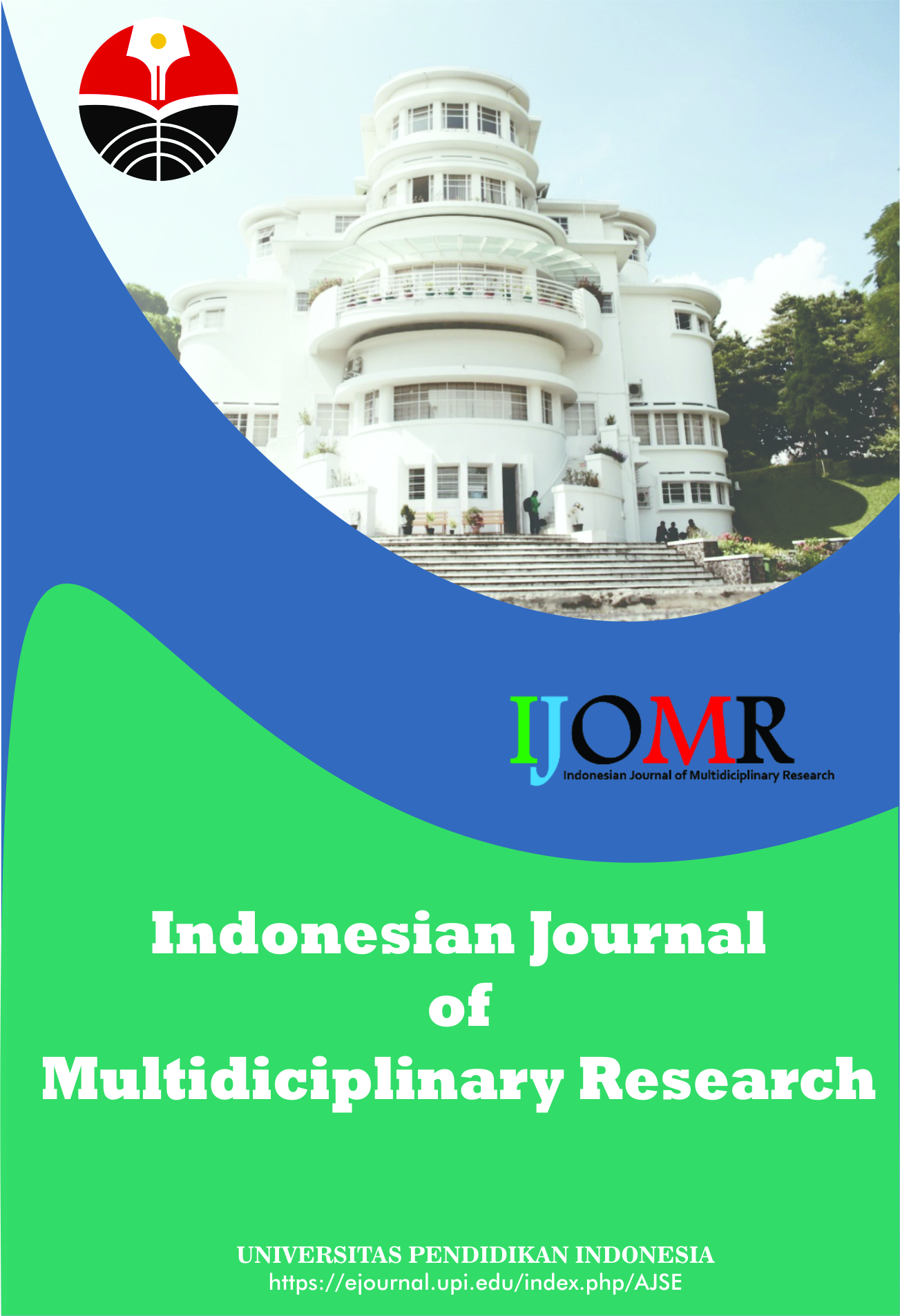Pre-Service Teachers’ Attitude and Access to Utilization of Virtual Classroom for Learning
Abstract
The study was carried out to determine the attitudes and access to virtual classrooms that pre-service teachers had for learning in Kwara State, Nigeria. A descriptive survey design was embraced for the study, with 120 education students as the respondents. The research instruments were subjected to expert scrutiny to ascertain content validity, while a pilot study revealed a reliability coefficient. Descriptive statistics (mean, frequency, and percentage) addressed the research questions, while independent sample t-tests were adopted to test the hypotheses. There was a general positive attitude towards a virtual classroom. This translates to the majority of the respondents strongly agreeing that their attitudes were good. The degree of access to the virtual classroom was favourable as well, though with some notable disparities, indicating good access but leaving room for improvement. The test for hypothesis reveals no significant difference between males and females in the attitudes of pre-service teachers towards virtual classrooms, but there was a significant difference in terms of access of pre-service teachers to virtual classrooms in favour of males over females. While pre-service teachers have a positive attitude towards virtual classrooms, gender disparity in access still exists. Educational institutions leverage these positive attitudes by enhancing infrastructure and ensuring equitable access to virtual learning environments for all students.
Keywords
Full Text:
PDFReferences
Aderogba, A., Onojah, A., and Olumorin, C. (2021). Correlational studies between secondary school teachers' access to and utilization of internet facilities for instruction in Ilorin, Nigeria. International Journal of Education and Development using Information and Communication Technology, 17(1), 6-20.
Al Hosni, J., and Al Dhahli, W. (2021). Undergraduate students’ attitudes towards online language classes during the COVID-19 Pandemic: Are students thriving or surviving. Journal of English Language Teaching and Applied Linguistics, 3(10), 16-30.
Alasela, A. A., Ogunlade, O. O., Ogunlade, A. A., and Obielodan, O. O. (2016). Enhancing learning through information and communication technology: University of Ilorin Pre-service teachers’ perception. Malaysian Journal of Distance Education, 18(1), 71–85.
Barbour, M. (2009). Today's student and virtual schooling: The reality, the challenges, the promise. Journal of Distance Learning, 13(1), 5-25.
Binitie A. P., Onochie C. C. and Owolabi, A. (2020). The degree of confidence to the use of virtual classroom apps by teachers of Nigerian public and private secondary schools. African Scholar Publications & Research International, 18(8), 247-261.
Biswas, R. A., and Nandi, S. (2020). Teaching in virtual classroom: Challenges and opportunities. International Journal of Engineering Applied Sciences and Technology, 5(1), 334-337.
Botelho, F. H. F. (2021). Accessibility to digital technology: Virtual barriers, real opportunities. Assistive Technology, 33(sup1), 27–34.
Chiao, C., and Chiu, C.-H. (2018). The mediating effect of ICT usage on the relationship between students’ socioeconomic status and achievement. The Asia-Pacific Education Researcher, 27, 109-121.
Delgado, K. D. D., and Kassim, S. R. (2019). Mathematics anxiety among young filipino learners: investigating the influence of gender and socio-economic status. Online Submission, 31(3), 575-579.
Edache-Abah, O., and Mumuni, A. (2019). Effect of YouTube on performance of secondary school students in biology concepts in Ikwerre Local government area of rivers state. International Journal of Engineering Science Invention, 8(8), 54-61.
Ekunola, G. T., Onojah, A. O., Talatu, A. F., and Bankole, M. O. (2022). Colleges of education lecturers’ attitude towards the use of virtual classrooms for instruction. Indonesian Journal of Multidiciplinary Research, 2(1), 187-194.
Elfeky, A. I. M, and Elbyaly, M. Y. H. (2021). Developing skills of fashion design by augmented reality technology in higher education. Interactive Learning Environments, 29(1), 17-32.
Ghilay, Y. (2022). Quantitative courses in higher education: A comparison between asynchronous and synchronous distance learning. Journal of Education and Learning, 11(5), 93-106.
Gupta, B., White, D. A., and Walmsley, A. D. (2004). The attitudes of undergraduate students and staff to the use of electronic learning. British Dental Journal, 196(8), 487-492.
Hargis, J., Lu, H. C., and Moon, J. H. (2021). Differences, limitations and advantages of effective online and face-to-face teaching methods for a Media Arts course. The Online Journal of New Horizons in Education, 11(1), 15.
Joshi, B. M., Khatiwada, S. P., and Pokhrel, R. K. (2024). Influence of socioeconomic factors on access to digital resources for education. Rupantaran: A Multidisciplinary Journal, 8(01), 17-33.
Kaya, S. (2020). The factors predicting students’ participation in online English courses. Eurasian Journal of Educational Research, 20(91), 1–20.
Kim, J. Y., and Fienup, D. M. (2022). Increasing access to online learning for students with disabilities during the COVID-19 pandemic. The Journal of Special Education, 55(4), 213-221.
Ogunlade, O. O., and Anaza, A. O. (2017). Assessment of student-teachers' ICT needs using UNESCO ict-cft in colleges of education in North Central, Nigeria. Journal of Science, Technology, Mathematics and Education, 13(3), 161-176.
Raes, A., Vanneste, P., Pieters, M., Windey, I., Van Den Noortgate, W., and Depaepe, F. (2020). Learning and instruction in the hybrid virtual classroom: An investigation of students’ engagement and the effect of quizzes. Computers & Education, 143, 103682.
Raja, R., and Nagasubramani, P. C. (2018). Impact of modern technology in education. Journal of Applied and Advanced Research, 3(1), 33-35.
Unger, S., and Meiran, W. (2020). Student attitudes towards online education during the COVID-19 Viral Outbreak of 2020: Distance learning in a time of social distance. International Journal of Technology in Education and Science, 4(4), 256–266.
Wald, M. (2006). Creating accessible educational multimedia through editing automatic speech recognition captioning in real time. Interactive Technology and Smart Education, 3(2), 131-141.
DOI: https://doi.org/10.17509/ijomr.v5i2.84907
Refbacks
- There are currently no refbacks.
Copyright (c) 2025 Kantor Jurnal dan Publikasi, Universitas Pendidikan Indonesia (UPI)

This work is licensed under a Creative Commons Attribution-ShareAlike 4.0 International License.
Indonesian Journal of Multidiciplinary Research (IJOMR) is published by Universitas Pendidikan Indonesia (UPI)















